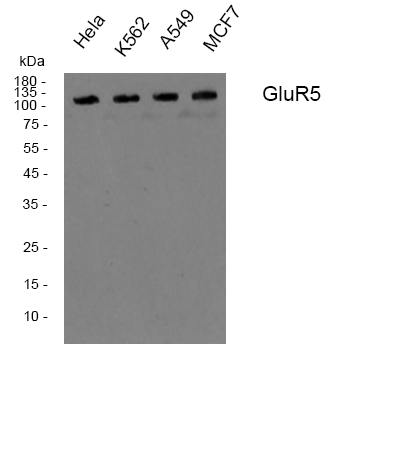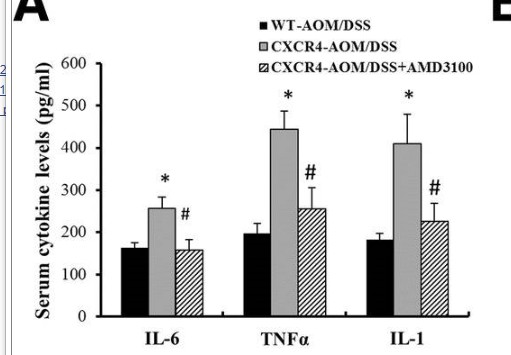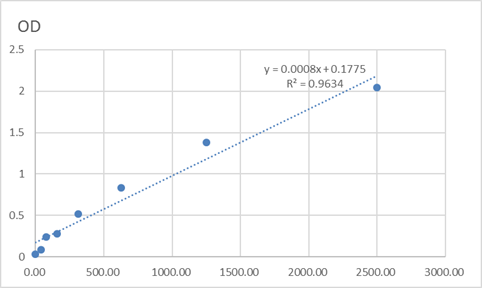
Catalog: KA3275C
Size
Price
Status
Qty.
96well
$330.00
In stock
0
Add to cart


Collected


Collect
Main Information
Reactivity
Human, Mouse, Rat
Applications
ELISA
Conjugate/Modification
Unmodified
Detailed Information
Storage
2-8°C/6 months,Ship by ice bag
Modification
Unmodified
Detection Method
Colorimetric
Related Products
Antigen&Target Information
Gene Name:
GRIK1
show all
Protein Name:
Glutamate receptor ionotropic kainate 1
show all
Other Name:
GRIK1 ;
GLUR5 ;
Glutamate receptor ;
ionotropic kainate 1 ;
Excitatory amino acid receptor 3 ;
EAA3 ;
Glutamate receptor 5 ;
GluR-5 ;
GluR5
GLUR5 ;
Glutamate receptor ;
ionotropic kainate 1 ;
Excitatory amino acid receptor 3 ;
EAA3 ;
Glutamate receptor 5 ;
GluR-5 ;
GluR5
show all
Background:
alternative products:Additional isoforms seem to exist,function:Ionotropic glutamate receptor. L-glutamate acts as an excitatory neurotransmitter at many synapses in the central nervous system. Binding of the excitatory neurotransmitter L-glutamate induces a conformation change, leading to the opening of the cation channel, and thereby converts the chemical signal to an electrical impulse. The receptor then desensitizes rapidly and enters a transient inactive state, characterized by the presence of bound agonist. May be involved in the transmission of light information from the retina to the hypothalamus.,miscellaneous:The postsynaptic actions of Glu are mediated by a variety of receptors that are named according to their selective agonists. This receptor binds domoate > kainate > L-glutamate = quisqualate > CNQX = DNQX > AMPA > dihydrokainate > NMDA.,RNA editing:Partially edited.,similarity:Belongs to the glutamate-gated ion channel (TC 1.A.10) family.,subunit:Homotetramer or heterotetramer of pore-forming glutamate receptor subunits. Tetramers may be formed by the dimerization of dimers (Probable). The unedited version (Q) assembles into a functional kainate-gated homomeric channel, whereas the edited version (R) is unable to produce channel activity when expressed alone. Both edited and unedited versions can form functional channels with GRIK4 and GRIK5.,tissue specificity:Most abundant in the cerebellum and the suprachiasmatic nuclei (SCN) of the hypothalamus.,
show all
Function:
ion transport, cellular ion homeostasis, cell surface receptor linked signal transduction, glutamate signaling pathway,cell-cell signaling, synaptic transmission, behavior, positive regulation of cell communication, negative regulation of cell communication, regulation of gamma-aminobutyric acid secretion, positive regulation of gamma-aminobutyric acid secretion, transmission of nerve impulse, cellular homeostasis, adult behavior, regulation of neurological system process, negative regulation of neurological system process, positive regulation of neurological system process,regulation of synaptic transmission, GABAergic, positive regulation of synaptic transmission, GABAergic, regulation of organic acid transport, positive regulation of organic acid transport, multicellular organismal response to stress,regulation of membrane potential, homeostatic process, regulation of system process, response to pain, behavioral response to pain, chemical homeostasis, ion homeostasis, regulation of synaptic transmission, negative regulation of synaptic transmission, positive regulation of synaptic transmission, neurological system process, regulation of secretion, positive regulation of secretion, positive regulation of transport, positive regulation of multicellular organismal process, negative regulation of multicellular organismal process, membrane depolarization, regulation of amine transport, positive regulation of amine transport, regulation of amino acid transport, positive regulation of amino acid transport, regulation of synaptic transmission, glutamatergic, negative regulation of synaptic transmission, glutamatergic, regulation of transmission of nerve impulse, negative regulation of transmission of nerve impulse,positive regulation of transmission of nerve impulse, cellular chemical homeostasis, regulation of postsynaptic membrane potential, regulation of excitatory postsynaptic membrane potential, regulation of inhibitory postsynaptic membrane potential, membrane hyperpolarization,
show all
Cellular Localization:
Cell membrane; Multi-pass membrane protein. Cell junction, synapse, postsynaptic cell membrane; Multi-pass membrane protein.
show all
Tissue Expression:
Signaling Pathway
Reference Citation({{totalcount}})
Catalog: KA3275C
Size
Price
Status
Qty.
96well
$330.00
In stock
0
Add to cart


Collected


Collect
Recently Viewed Products
Clear allPRODUCTS
CUSTOMIZED
ABOUT US
Toggle night Mode
{{pinfoXq.title || ''}}
Catalog: {{pinfoXq.catalog || ''}}
Filter:
All
{{item.name}}
{{pinfo.title}}
-{{pinfo.catalog}}
Main Information
Target
{{pinfo.target}}
Reactivity
{{pinfo.react}}
Applications
{{pinfo.applicat}}
Conjugate/Modification
{{pinfo.coupling}}/{{pinfo.modific}}
MW (kDa)
{{pinfo.mwcalc}}
Host Species
{{pinfo.hostspec}}
Isotype
{{pinfo.isotype}}
Product {{index}}/{{pcount}}
Prev
Next
{{pvTitle}}
Scroll wheel zooms the picture
{{pvDescr}}



















